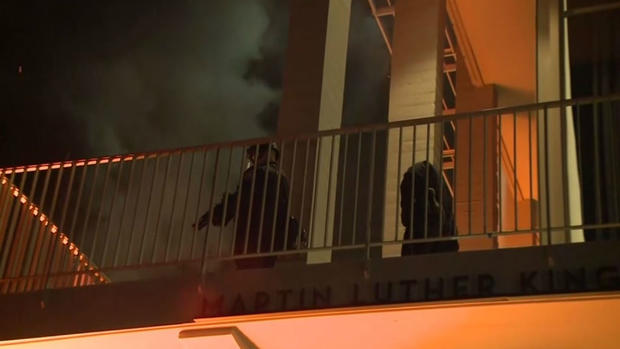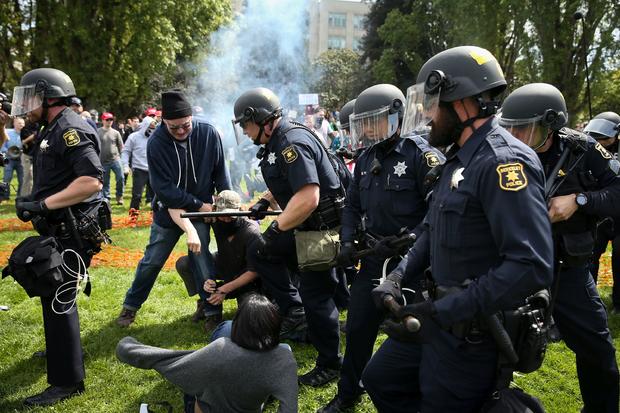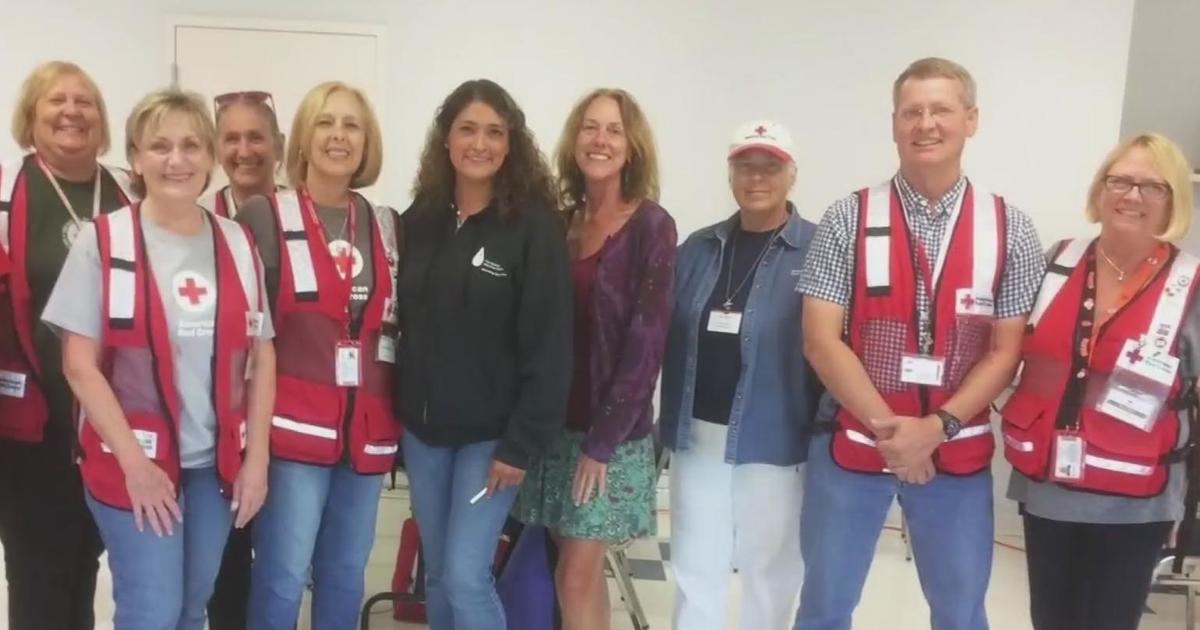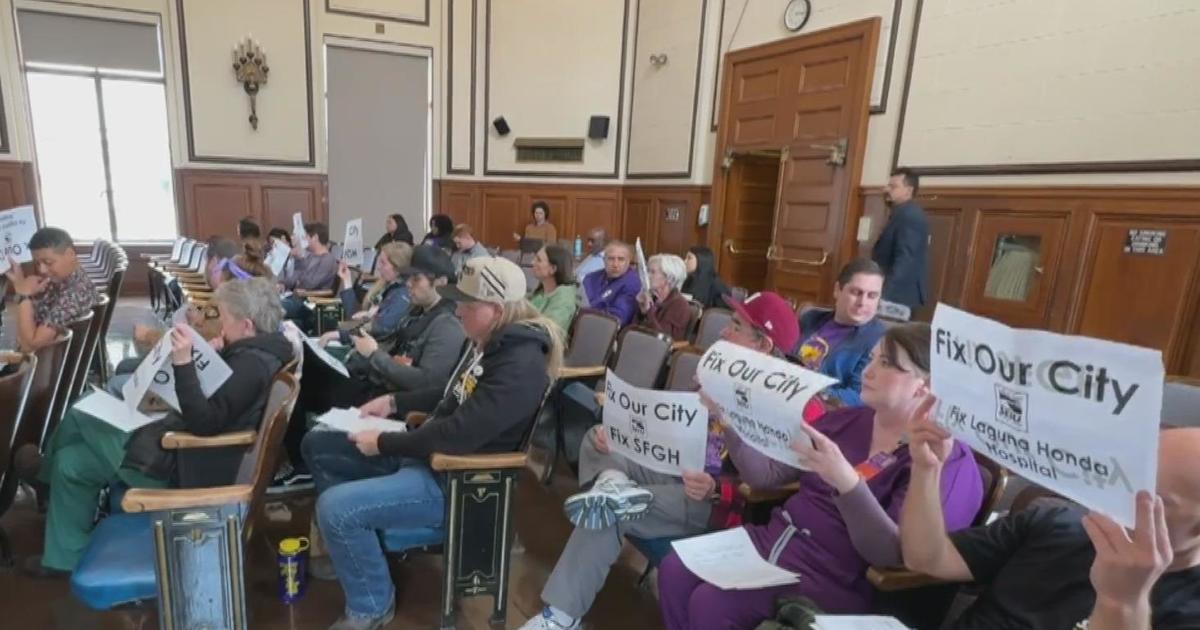Wildfires, Political Unrest, Death Of A Mayor – Top Bay Area Stories In 2017
SAN FRANCISCO (CBS SF) – The year began with near biblical downpours and a crumbing dam and ended with the death of San Francisco Mayor Ed Lee.
Sandwiched in between was political violence in Berkeley, the Bay Area fight over the Trump Administration's immigration policies and the most devastating wildfires in California history in wine country.
Here are CBSSF.com's top five news stories for 2017.
Torrential Rains End California's 5-Year DroughtWhen it comes to rain, the forecasters at the National Weather Service go by their own calendar.
While the normal calendar year runs from Jan. 1-Dec. 31st, the rain or water year, according to forecasters, runs from Oct. 1 and ends on Sept. 30. And after years of drought, the rain year in 2017 was a record setter.
To aid its efforts, the weather service maintains a system of eight measuring stations in the Northern Sierra. Rain and snow in 2017 set a new rain year high of 89.7 inches. The previous record was 88.5 inches in 1982-83.
In the Bay Area, forecasters say that San Rafael set a mark for an all-time wettest year at 61.72 inches. The old mark was 61.45 inches in 1994-1995.
The Mount Diablo Junction in the East Bay also set a new mark at 50.40 inches. The old mark was 44.30 inches back in 1997.
Snow also blanketed the Sierra -- allowing the ski season to run until July.
According to the weather service, Sugar Bowl had 751 inches of snow. Boreal followed with 708 inches, Squaw Valley had gotten 685 inches, Soda Springs 680 inches and Northstar 669 inches.
But the biggest story of the rainy season came on Sunday afternoon Feb. 12th when cracks in the Oroville Dam's spillway threatened to cause the collapse of the nation's tallest dam.
More than 180,000 residents living along the Feather River were ordered to evacuate immediately -- triggering a chaotic exodus that clogged local roadways and could have led to a devastating disaster.
Fortunately, the dam did not collapse and crews spent months rebuilding the structure.
Political Unrest Turns Violent In Berkeley
The birth place of the Free Speech Movement became embroiled in a battle between the ultra-right and ultra-left that ended with dozens of arrests, several people being injured and damage to buildings the U.C. Berkeley campus on in the surrounding neighborhoods.The unrest began on Feb. 1st when a planned speech by ultra-right commentator Milo Yiannopoulos on the U.C. campus was cancelled by a riot. Several people were injured, at least four banks vandalized and fires were lit at the Martin Luther King Jr. Student Union building.
Riot-geared police used tear gas to bring the violence under control.
Violence returned to Berkeley in April when a "Patriot Day" rally staged by supporters of President Donald Trump became a battleground between the alt-right and the 'block block' of the Antifa movement.
Fist fights erupted, the rocks were tossed, demonstrators were assaulted as police struggled to maintain some semblance of order.
A Trump supporter was the first casualty of the day. He had blood streaming down his face. It went downhill from there.
IMAGES: Violent, Bloody Day In Berkeley
"Well, they want to hit me with brass knuckles from my blind side, said John Beavers of Washington, his nose gushing blood.
"They hit me twice while I was down, it was sad," said David Fry, from the same state.
More fights broke out in front of the officers in Civic Center Park.
READ: Organizers Of Pro-Trump Rally In Liberal Berkeley Were 'Proud Boys'
Police began arresting people, but things soon turned into total chaos as both camps left the park and began to fight on the street.
According to Berkeley Police Department, 20 people were arrested that day and several others were taken into custody in the weeks and months that followed as suspects were identified from photos and videos.
Peace returned to the streets of Berkeley as the year worn on a week of speeches by conservatives including Yiannopoulos were held with few incidents of violence.
Immigration and Sanctuary Cities
San Francisco and many other Bay Area cities squared off in 2017 against President Donald Trump and his administration when it came to immigration.
Trump's controversial travel bans, the Deferred Action for Childhood Arrivals (DACA) policy and Sanctuary City laws were subjects of federal courtroom legal battles.
San Francisco entered the year with a Sanctuary City law on the books, but during 2017 other Bay Area cities and even the state of California adopted some version of the policy. The actions caused friction with the Justice Department as local cooperation was denied to federal immigration enforcement efforts.
Trump threatened to redraw federal funding from Sanctuary cities, but San Francisco won a court decision that rendered such an action illegal.
And while those battles got plenty of media coverage, it was the Kate Steinle murder trial that put a human face on the heated debate.
Steinle was fatally struck by a bullet as she walked with her father on a crowded San Francisco pier. An illegal immigrant -- Jose Ines Garcia Zarate --
was charged in the case.
Prosecutors pushed hard for a first degree murder conviction, but the jury did not deliver. Garcia Zarate was found not guilty of all charges except for the gun possession charge.
Defense attorney Matt Gonzalez spoke after the verdict was read, first taking a moment to offer condolences to the Steinle family.
"I hope that they do not interpret this verdict as diminishing in any way the awful tragedy that occurred," said Gonzalez.
Gonzalez was also quick to ask that the jury's decision be held in the proper regard.
"This jury's verdict should be respected," Gonzalez said. "They heard the evidence. They deliberated as a group. They heard read back testimony. They looked at the physical evidence and they rendered a verdict to the best of their abilities in accordance with the law."
U.S. Attorney General Jeff Sessions wasted no time attacking San Francisco's Sanctuary City policies after the not guilty verdict in the high-profile trial was made public. His agency also leveled new federal charges against Garcia Zarate.
Sessions issued a statement placing the blame for Steinle's July 1, 2015 death on the city's Sanctuary City policies, which limit cooperation and communication between local law enforcement and immigration authorities.
"When jurisdictions choose to return criminal aliens to the streets rather than turning them over to federal immigration authorities, they put the public's safety at risk," Sessions said. "San Francisco's decision to protect criminal aliens led to the preventable and heartbreaking death of Kate Steinle."
2018 dawned with California's Sanctuary State Law officially going on the books.
Wildfires Spread Death and Devastation In Wine County
A combination of dry underbrush, high winds, stifling heat and low humidity during the first two week of October, set the scene for the deadliest and most destructive outbreak of wildfires in California's history across Napa, Sonoma and Mendocino counties.
On the night of Oct. 8, a wind-whipped wildfire roared down Napa's Atlas Peak into the neighborhoods near the Silverado County Club. Several died as the flames raced from home to home including Charles and Sara Rippey.
Charles and Sara grew up in a small town in Wisconsin and met in grade school when their life-long love affair began.
"He was in sixth grade and she was in fourth grade," their son Mike Rippey told KPIX 5. "They went to the University of Wisconsin together and have been together ever since."
When the fire came, Rippey said his father attempted to save his mother, but died in the attempt.
"From where they found his body, he was trying to get from his room to her room," he said. "He never made it. Even if he had gotten there, he wouldn't have been able to get her out. She just couldn't move well at all. And there is no way he would have left."
To the west, the Tubbs Fire ignited and quickly spread into Santa Rosa, turning the once idyllic Coffey Park neighborhood into ash and forcing thousands from their homes.
Among the Tubbs Fire victims was Karen Aycock, who lived on Dogwood Drive. Her home was destroyed by the fire and her niece Jeanette Scroggins joined police in searching the debris for any sign of her aunt.
Her charred car was still in the driveway.
Another niece -- Victoria Rilling -- posted on Facebook that searchers had located her aunt's remains within the burned out home.
"It's with a heavy heart that I say this, the sheriffs department called me to inform me that Karen was found in her home," she wrote on a Faceobok post. "We thank you for all your support in locating her."
In Mendocino County, the Redwood Fire ripped through the Redwood Valley neighborhood trapping many residents as they attempted to flee. Among the victims were teenagers Kressa Shepherd and her brother Kai who were killed when flames engulfed their home and car as they attempted to escape with their parents.
The Shepard's neighbor Paul Hanssen ran from his burning home, a water-soaked towel around his head and dog by his side, and took shelter in a trailer. He waited nervously for two long hours as winds howled and embers flew by.
When the fire passed, he hurried toward his neighbors' house, where he found Sara Shepherd and her 17-year-old daughter, Kressa, lying on the ground, more than half their bodies burned.
He called 911 and took water from a hot water heater left in the charred remnants of the family's home, squeezing drops into their mouths with the towel from his head.
"It was the most gut-wrenching, heartbreaking thing I've ever seen in my life," he said.
Scars from the fires will remain within the residents on the hillsides for years to come. The fires claimed 43 lives and destroyed 8,400 buildings.
San Francisco Mayor Ed Lee Dies Of A Heart Attack
Mayor Ed Lee had been a well known figure at San Francisco City Hall long before he was named by the Board of Supervisors to replace Gavin Newsom after Newsom was elected Lieutenant Governor in 2011. He was the city's first Asian-American mayor.
Lee was among four candidates chosen to vie to replace Newsom, but initially said he was not interested in the job. At the urging of former San Francisco Mayor and Assembly speaker Willie Brown, the late Chinatown power broker Rose Pak and Sen. Dianne Feinstein, he tossed his name into the selection process.
"Those of us who helped orchestrate his selection as interim mayor knew he was going to be an important figure," Brown told KPIX 5. "He clearly was important in the symbolism of the mayorship. His being the first person of Asian descent in a major American city in this nation was in and of itself decisive."
As he talked about Lee, who was head of purchasing and public works for the city when Brown was mayor, his voice cracked with emotion.
"I don't know San Francisco without Ed Lee," Brown said. "He was a part of everything. He was the human rights director. He was head of purchasing during my administration. He was head of public works. He became the CAO (chief administrative officer) for the city... I just can't imagine the city without Ed Lee."
Lee won election to the office on Nov. 8, 2011 and was re-elected in 2015.
On the night of Dec. 11, Lee had gone to do some family grocery shopping at the Diamond Heights Safeway when he suffered a heart attack. He collapsed and was rushed to the hospital. Hours later, he was dead at the age of 65.
Lee's death stunned the city. At a morning news conference, acting Mayor and Supervisor London Breed voiced what many were thinking.
"He was from the dawn of his career an advocate for the powerless, a voice for overlooked," she said of Lee. "Someone who fought for those in need before himself. That commitment to others defined the mayor's three decades of public service."
ALSO READ: Leaders Stunned By Sudden Passing Of San Francisco Mayor Ed Lee
Lee was remembered for his humility, integrity and infectious smile during a public celebration of his life at City Hall, attended by family members, former staff, politicians and residents.
"I never saw him down," Brown said. "Every time you saw him he was happy, he was expressing a very upbeat attitude."





